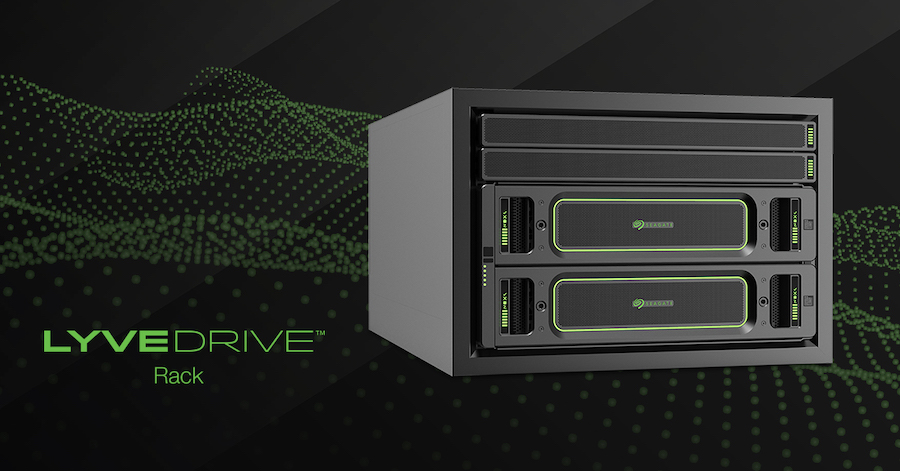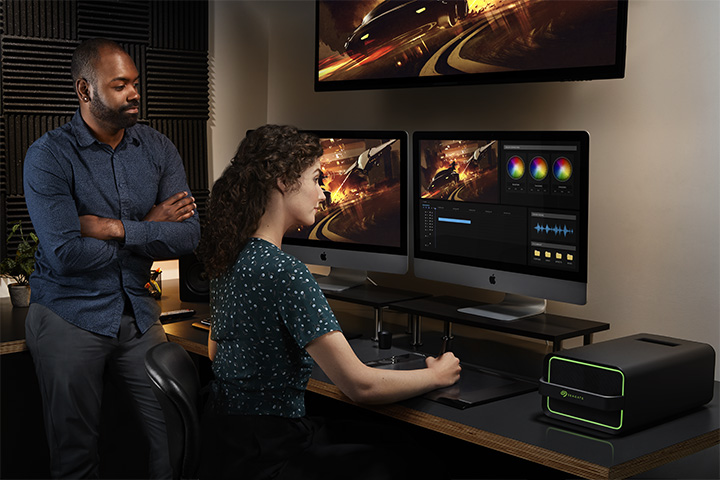Seagate
Hardware

From where the data storage experts at Seagate Technology sit, data is alive. It evolves—and with some thought and agility, businesses can not only manage their data but grow with it. Security-minded enterprises partner with Seagate to unify their data experiences, find efficiencies, and manage large quantities of data with a physical infrastructure that’s perfectly tailored to their industry’s needs.
“We live in a data economy,” said Seagate’s CEO Dave Mosley. “The value of enterprise data is often untapped. Businesses struggle to access their data’s full potential. Seagate tailored its offerings to match the new information-hungry reality. Our data management innovations will help companies get more value out of their data.”
As of September 2020, these offerings include the open source software CORTX™, its community, and the open, flexible reference architecture Lyve Drive™ Rack, powered by CORTX. Together, these solutions build on more than 20 years of object storage expertise, including the very first object storage specification created by Seagate in the late 90s: the SNIA OSD. Managing Technologist and CORTX™ Community Director John Bent is a distributed data expert. He joined Seagate to help build their open source presence. “Seagate is a storage vendor,” he said, “But customers need a mass data platform—they need software optimized for mass capacity.” For instance, the scientists working in machine learning need to access and study their products’ data. This is where CORTX comes in.

CORTX is hardware-agnostic, open source object storage software that gives developers and partners access to mass capacity-optimized data storage architectures. It ties together data across devices, making it accessible to applications and transforming a disk into a data platform. As Bent described, “The software needs to be smart. It not only needs to protect data from storage failures but also act like a librarian. It needs to know where all the books are, where each piece of data lives on a disk—to collect, organize, and query metadata.”
CORTX effectively opens up each hard drive for teams to see and learn from. And, as of September 2020, it’s an open source on GitHub. Bent outlined the reasons why Seagate got into open source: “Seagate wanted to enable enterprises to store more data that is valuable for their applications and ultimately to their businesses. Open sourcing CORTX gives more enterprises access to mass capacity storage devices at scale. And shares the methods and software best suited for the most efficient software enablement of these devices.”
Bent dreams of a world where licensed software companies can use CORTX to make their products more efficient, deliver a better hardware experience, and make data massively durable at scale. Because CORTX is open source, Seagate devices can reach this unprecedented potential.
As Bent explained, “Our goal is to co-develop open software with our mass capacity storage devices so that the whole world can benefit from the full capabilities of each successive generation of our increasingly large storage devices. The more massive your training dataset, the more accurate your artificial intelligence is. If we can help the world store more data, more advanced models can quite literally save us. They can help us understand climate change, develop vaccines, and prevent car accidents.”

To develop CORTX and other software, Seagate uses GitHub Enterprise Cloud. They started off with instances of Gerrit and GitLab, but the disparate code hosts got in the way of sharing and collaborating across their large team. They migrated to GitHub to keep all of their code (and all of their developers) in one platform.
We needed to switch not just for our own developers. For us to welcome the larger software community, we had to be on GitHub.
“Consolidating our code on a single platform has been super useful for us, especially for CI/CD and our DevOps pipeline,” added Bent. “Integrating with third parties is trivial, and it’s easier for us to tag each other into appropriate conversations when we’re all in one place.”
Ultimately, Seagate wanted to be closer to the open source community. “We needed to switch not just for our own developers,” said Bent. “For us to welcome the larger software community, we had to be on GitHub. We could just flip the switch and get so many more people involved.”
They didn’t just flip the switch, though. To set their move up for success, the team did some experimenting first. Before introducing CORTX’s code to the public, they opened it up to the rest of the company as an inner source project.
As a result, the influx of contributions overwhelmed the CORTX development team—and they quickly realized how hard it was to support an open source project. “We had to learn how to manage a community,” described Bent, “so when the real one showed up, we’d have it figured out and ready to go.”

It’s a popular adage that “software is eating the world.” But while every company becomes a software company, Bent is finding it easier than ever to focus on hardware. He and his team know that hardware is Seagate’s superpower. “Rather than diving into the business of selling components, we’re using software to make our hardware an even more valuable solution,” he explained.
For Seagate’s vision of the future to come to fruition, they had to make significant investments in the open source community. GitHub and the GitHub team are helping them make the most of the time and effort they’ve already poured in. Seagate grew a developer community beyond the walls of their organization by hosting code in the cloud. To better support it, they’ve leveled up their documentation, tuned into the Slack + GitHub integration, and built community support into their daily schedules.
And to smooth out and automate as many pieces of maintaining an open source project as possible, they’ve built new project management processes with GitHub Actions. Actions workflows makes sure Seagate engages community contributions—they automatically flag issues and pull requests left pending, spot new contributors, and more. “We knew opening up our code would be an investment,” said Bent, “but we’re confident it was the right decision.”
Beyond GitHub’s proximity to the open source community, Seagate’s Senior Engineering Manager Amol Kongre appreciates its reliability, ease of use, and scalability. “Infrastructure can often burden teams; it’s time consuming and expensive to manage,” he explained, “With GitHub, these headaches go away.” Kongre finds that his team is better able to focus on their core competencies and develop software without worrying about scaling their infrastructure. “We have someone taking care of us. That’s the biggest advantage,” he added.

Automatic builds, regression testing, packaging releases, and static code analysis are all neatly integrated into the GitHub platform. And to make the most of their increasingly unified developer experience, Seagate enlisted GitHub Professional Services. Since GitHub was new for many employees, teams met daily with Professional Services to warm up to the platform, to their new GitHub workflows, and to all of the tools they’d eventually use.
Kongre recalled Seagate’s initial partnership with GitHub as a deep dive on foundational decisions: the most efficient way to set up their instance, foster a healthy open source community, and more. “They helped us get off on the right foot,” he described. “We wanted to know how open source communities look at software and what their expectations of an enterprise are. We also looked at what communication channels we should use with external communities and what access controls to set.”
Once Kongre’s technically savvy team got started, they were able to dig in and further refine their workflows, reaching out to Professional Services when needed. “The GitHub team was proactive from the start. From migrating code and setting up our DevOps pipeline to modernizing our software practices, it’s been a good experience, and we’re still working with them.”
Over the years, GitHub has grown from Seagate’s code host to their trusted partner. Hosting code in the cloud has helped Seagate execute an ambitious open source strategy and build a community of developers. But for Bent, GitHub is more than open source. “GitHub is the platform for software development,” he said, “we’re happy with our progress, and we’re excited to continue to partner in the future.”
product
industry
number of seats
customer since
From flexible hosting to data‐powered security, get everything your team needs to build at their best.
Contact sales